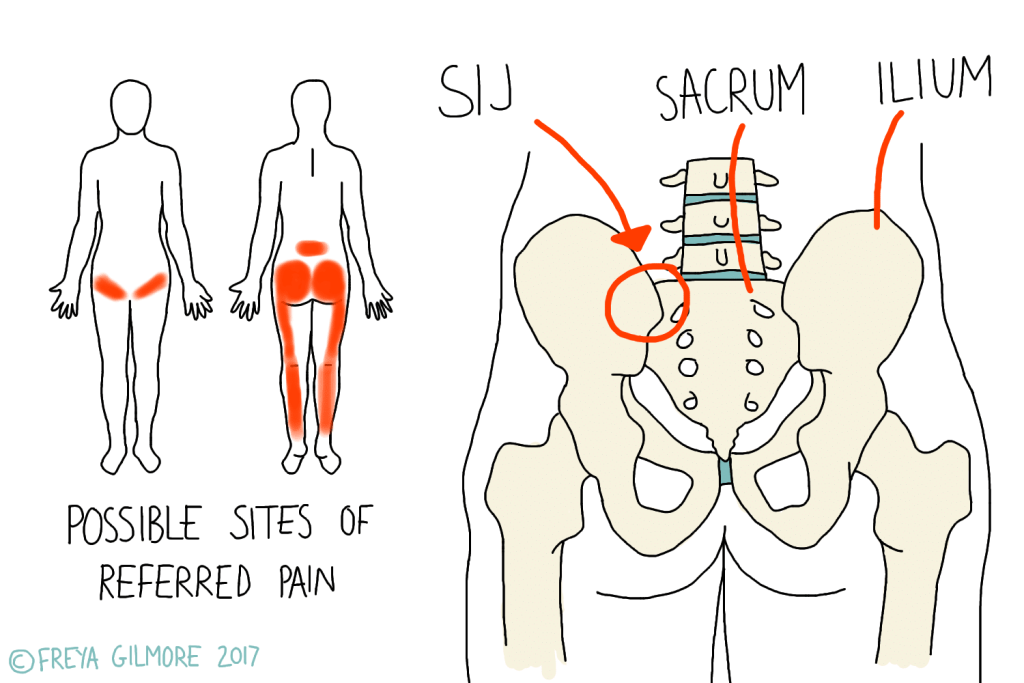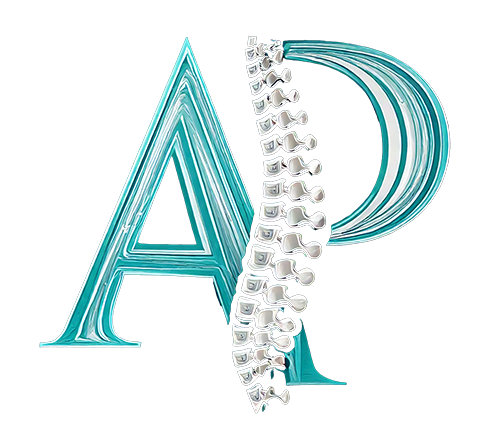SIJ Pain and Pregnancy
The SIJ is a strong joint that connects the pelvis to the base of the spine. It is considered a shock absorber rather than a joint of mobility.

The role of the SIJ changes in childbirth. As the baby enters the birth canal, it has to turn in a specific way to navigate through the pelvis. This is made easier by laxity of the SIJ ligaments, and increased mobility throughout the pelvis. Movement is still small, but significant compared to what is considered normal at any other time.
The SIJ in Early Pregnancy
SIJ laxity is enabled by the hormone relaxin. It is produced in preparation for birth from the first trimester, at which point associated aches can arise. These might be focused around the lower back, or follow the pattern illustrated above: spreading to the buttocks and legs.
Later Pregnancy
As the bump grows, the centre of gravity shifts forwards. Typically, we compensate for this by leaning back. This can lead to tightness in the muscles of the lower back as they adapt to a deeper curve in the back. However, these muscles act around the SIJ, and increased tension through them can increase pressure on the joint. These changes can cause further irritation.
At this point, the factors irritating the SIJ will not ease until birth. It is recommended that symptoms are addressed sooner rather than later. Although some discomfort in pregnancy is unavoidable, excessive pain and limited function does not have to be tolerated.
Birth and beyond
Standard pregnancy-related SIJ pain often resolves at birth or shortly after. It may take longer if the joint became inflamed, or if the joint at the front of the pelvis was irritated in response. These complications occur in SPD, which is best addressed as early as possible, and definitely before birth. This causes acute pain in the front of the pelvis, and can limit options available in childbirth. Birthing positions with the legs wide apart are not recommended for women with SPD.
If you have lower back pain associated with pregnancy, make an appointment online to get it assessed.

